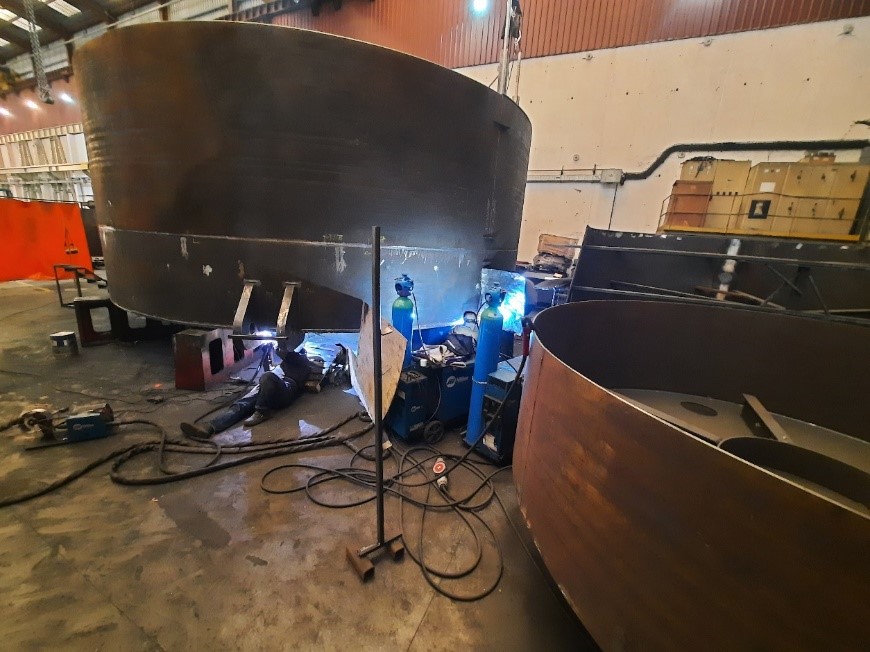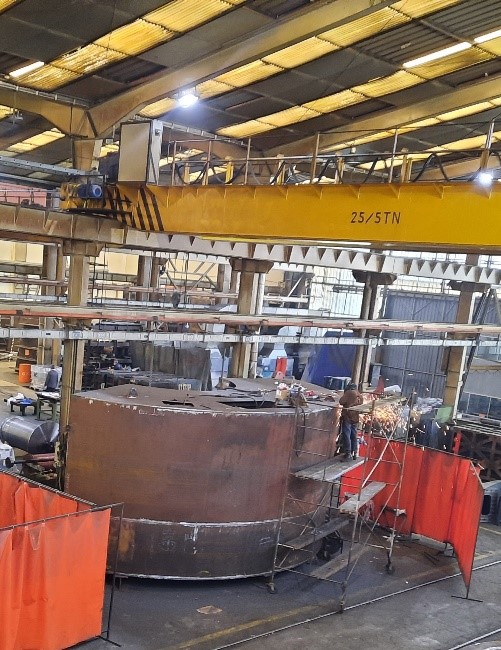The infrastructure provides information on the behaviour of materials, components and equipment working in a variety of areas: atmospheric, splash, immersion, confined and seabed.
At HarshLab, materials and components are tested in a real offshore environment, and 20 companies have been able to collect valuable information on corrosion, ageing and fouling of their materials in a marine environment. More than 500 products and samples have been tested, and in May the lab completes its third year in open sea conditions, at BiMEP.
The new version of HarshLab replaces the first version. This infrastructure has better features and capabilities, and will allow new tests and R&D activities aimed at improving the competitiveness of the offshore industry.
The HarshLab structure is currently under construction, supervised by IDOM. Once it is anchored opposite the coasts of Armintza, in four months’ time, Basque companies will be able to carry out ambitious offshore research projects.
About the new HarshLab
The new HarshLab will be connected to the grid and communications network thanks to an umbilical cable which will connect the lab to BiMEP's underwater network. Thanks to this connection, HarshLab will be able to test the operation of equipment on board and make it easier to handle loads by means of several embedded systems: hydraulic crane, outer davit and inner hoists.
The lab will be 8.5 m in diameter and 7 m high. It will be able to test more samples and equipment than the previous version in the same exposure areas: atmospheric, splash and immersion. HarshLab 2.0 will also allow confined and seabed tests, 65 metres deep.
Other unique equipment includes two openings in the seabed to test connectors, risers and umbilicals; an underwater modem to connect submerged elements to the surface; its own weather station; and a small underwater ROV (Remotely Operated Vehicle) on board. The communications system sends all the signals that are obtained on board through the optical fibres of the structure’s umbilical cable.
Further information

